It is often said that Gujaratis are born enterprenuers, business acumen runs in their blood. The will and zeal to exapand their horiszons has pushed lakhs of Gujaratis to explore distant lands. As a result, we have ventured not only in various parts of India but across the globe. It is hard not to find a Gujarati even in the least expected countries around the world. The easy going and friendly community that Gujaratis are is very well expressed in a very popular varnacular song, “Jya jya wase ek Gujarati, tya sada kal Gujarat…” even a single gujarati will create a Gujarat whereever he/she settles. Before the Gujaratis reached the North America, they set out for Africa with the ships embarking upon long voyages from the various ports of Gujarat, the popular being the port of Mandvi in Kutch. Way back in the mid 1800 the British East India Company coaxed lakhs of Indians to work on building continent’s one of the great railway. And most of them stayed back ever since. The three countries, Kenya, Zanzibar and Uganda had the highest concentration of Indians. Apart from labourers Indians also immigrated to East Africa as money lenders, traders and artisans. I have been told there were Gujarati schools there and the teachers here were specially called from Gujarat. These Gujarati businessmen and traders, shopkeepers known as dukhawalas together have contributed hugley in the economic development of East Africa. The Gujaratis might be segregated by caste but the language and their enterprise glued them together. The community flourished, but remained deeply united. Until their expulsion from Uganda in 1972 and the sense of insecurity many settlers arrived in UK, South Africa, Canada, Australia, Fiji and other commonweath countires or to US, Tanzania, India, Pakistan… where they built their lives all over again.
Apart from the language and their business acumen, it was food that united the Gujaratis in this faraway lands. A lot of food preperations that they took along with them have no mention if we explore the mentions. It also gave birth to East African Gujarati Food that emerged with the immersion of Ugandan/East African ingredients and Gujarati spices!” as mentioned by Sheena Patel – American with East African Gujarati heritage, over my Insatgram post of Amrat Paak. This is so ineresting and needs to be explored further.
The Amrat Pak, I share here has been quite a revelation. Our search for an authentic recipe of Amrat Pak was spread across 3 continents. Asia, Europe and Africa. Smitaben scouted for the recipe in the UK and later in South Africa to help me document the Amrat Pak she had grown up eating. I searched for the recipe or mention of it with friends and family in Gujarat. No one seemed to have memory of eating it in Gujarat l. Next came trying the recipes, she in her UK kitchen and I in my Amdavadi kitchen with our families who certainly were a happy bunch of guinea pigs. Smitaben is a very dear friend who has grown up in East Africa and is now settled in the UK. Amrat Paak is a lavish and decadent Gujarati mithai/fudge that travelled along with Gujaratis who immigrated to British East Africa in the early 19th century and later to the countries the Gujarati Diaspora settled after their expulsion from Uganda by Idi Amin in early 1970s
As Smitaben writes..
Amritpak was part of my growing up!
My mum used to make it and so did all the relatives and friends of my my mother’s age. It was the fixed sweet dish on the menu at whoever’s house we went to for a meal. You would even at the weddings and religious functions within the East African Gujarati community. Overindulgence put me off Amritpak completely and may be others of my age too as the sweet which was common in my Mum’s generation is close to extinction in my generation. I never made an effort to learn it until recently my good friend Sheetal inquired about it.
So I asked one of my Aunties and had a go at it. The outcome was not how I remembered it.
In my recent trip to South Africa I asked Sarojmasi to give me a tutorial on Amritpak and to my surprise I have fallen in love with it! She made such a delicious Amritpak and in true Gujarati style she packed the container for me to take home back to UK and I just can’t stop eating it!
This effort brought back the sweet that was part of my childhood and a massive thank you to Sarojmasi for teaching me …Amrat Paak has come back into my life!
Amrat/Amrut/ Amrit means divine neacter and this mithai is nothing short than that. It is rich, has texutre and bite, the range of ingredients lend it varid flavours that seamlessly blend well togheter.
We have documented three versions of this mithai. And I will share all of them as I make and capture them. The first to go will be the recipe Smitaben sourced from an aunt in UK.
It is a slow cooked recipe, so have time on hand when you attempt to make it.
Hope you enjoy it as much as we have enjoyed searching it.
❤️
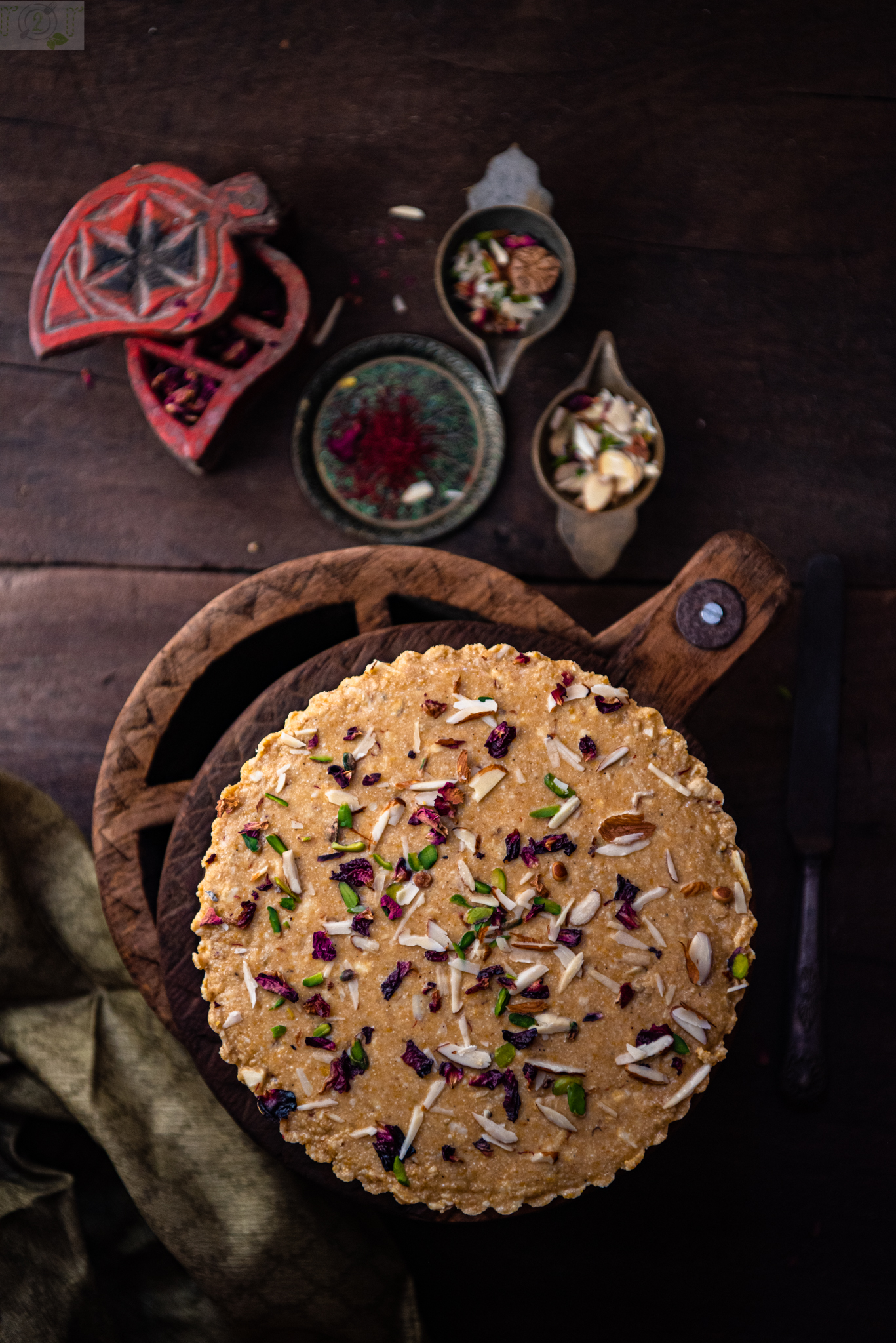
Amrat Pak
Ingredients
- 1 cup ghee ( plus more if needed)
- 1 cup semolina/rawo
- 1 cup chickpea flour/besan
- 1 cup whole wheat flour
- 2 cups icing sugar (reduce to suit your taste)
- 1 cup desiccated coconut
- 3/4 cup alomnds and pistachio slivers
- 1 teaspoon nutmeg powder or to preferance
- 1/2 teaspoon green cardamom powder
- a pinch of mace powder
- a pinch of saffron soaked in 2 tablespoons of milk.
Instructions
Take a clean heavy bottomed kadhai.
We will be usign the entire cup of ghee through the whole cookout.
Add 1/3 cup of ghee, on very gentle heat roast the semolina to a pinkish brown.
Remove the roasted rawa in a clean plate of bowl.
In the same Kadhai add 1/3 cup of ghee and roast the whole wheat flour to pale pink. It will begin to feel light and fluffy.
Transfer it to the bowl with semolina flour.
In the same Kadhai again take the remaining ghee and roast the chickpea flour till it is light, fluffy and emits very pleasent aroma. Add the soaked saffron and mix well. Cook for a minute. Transfer tothe bowl with flours.
Take couple of tablespoons of ghee and roast the dessicated coconut and 1/2 cup of almond and pistachio slivers.
Now transfer the roasted flours to the kadhai with raosted desicated coconut and nuts. Mix everything well.
Add the aromatics o mace, nutmeg and cardamom powder. Mix well.
Add the icing sugar.
Mix everything really well.
Spread the mix over large greased thali.
Sprinkle the remaining slivers of almonds and pistachios.
Press gently with the back of a katori.
Cut the Amrat Paak in squares.
Allow it to cool completely.
Once it has cooled, carefully transfer it to an airthight container.

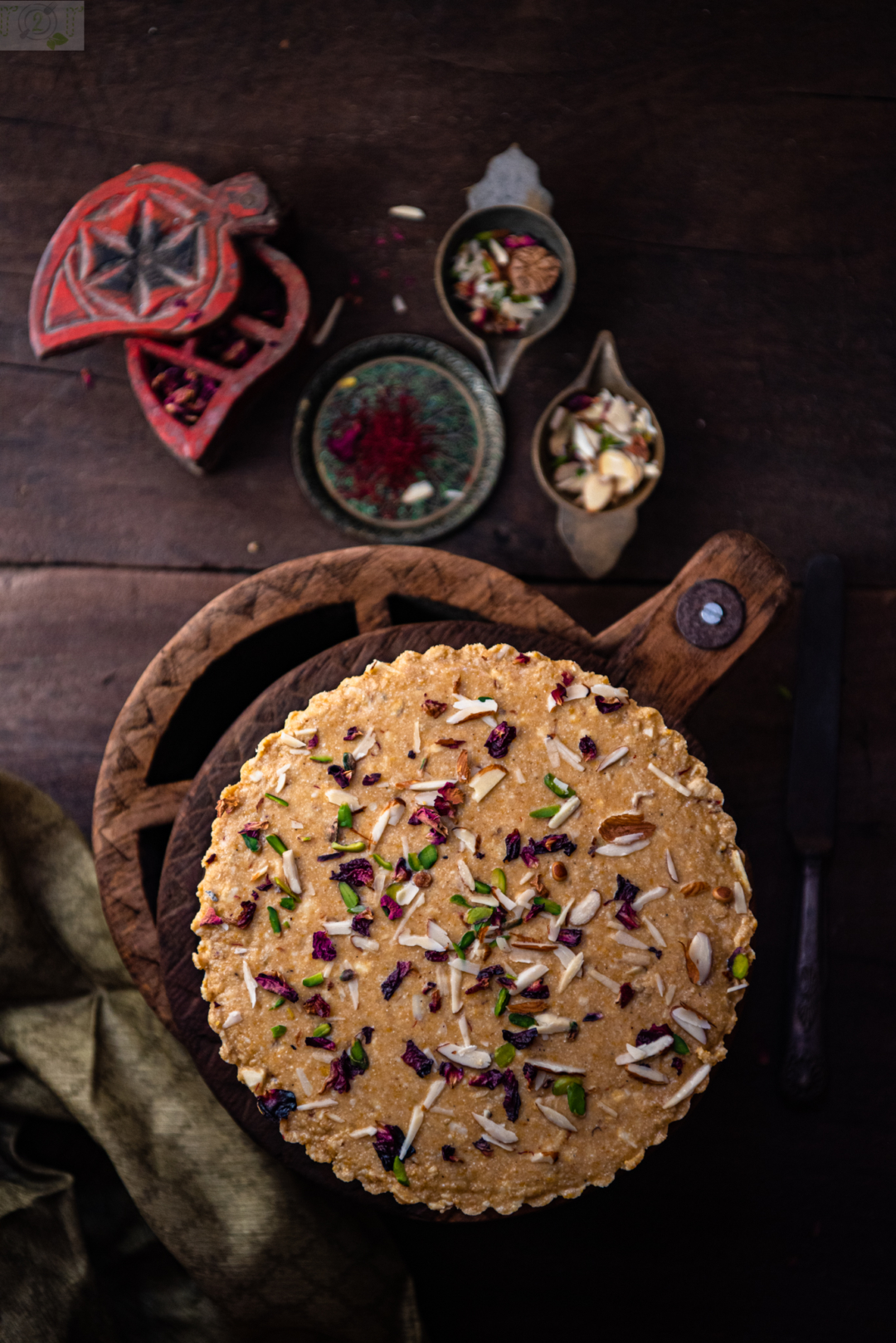

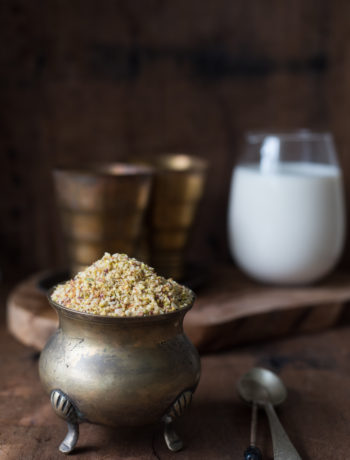
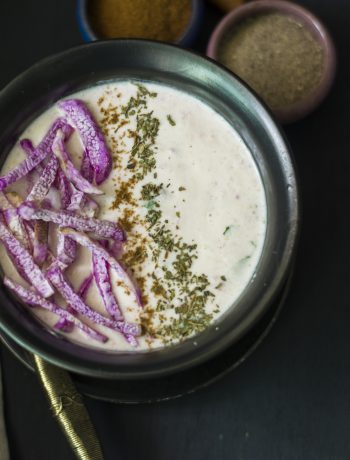
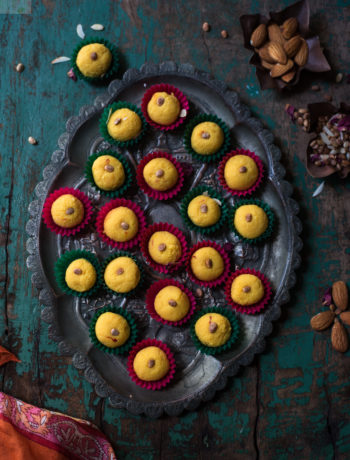
No Comments